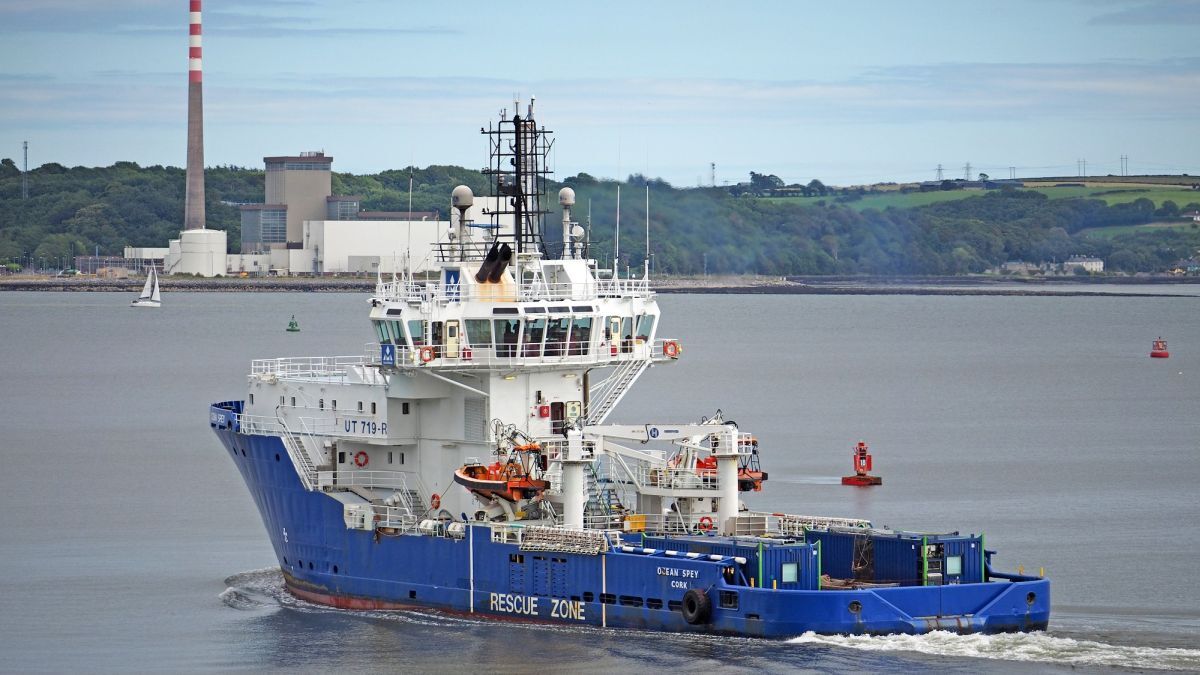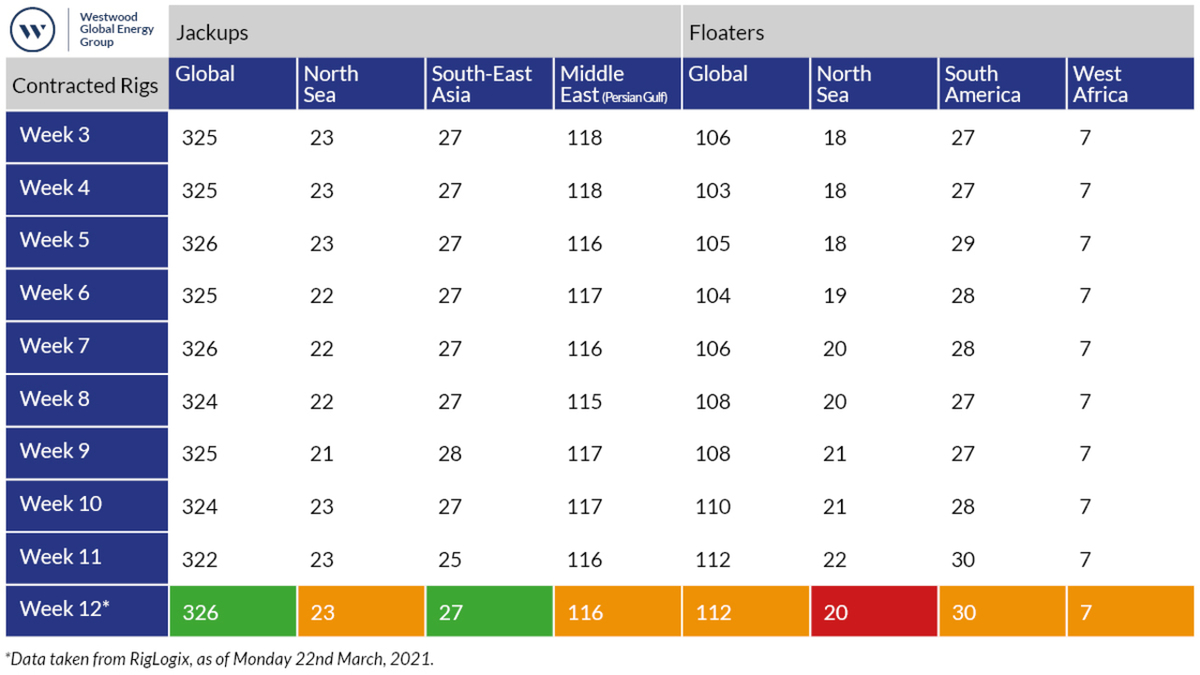Shipyards are being asked to convert OSVs for new ventures in aquaculture, renewables and icebreaking.
Offshore support vessel owners are turning to shipyards to convert their assets for a new life in and out of the energy market, or to install green propulsion systems.
Some owners are converting their vessels for operations in offshore renewables or in the growing aquaculture sector.
One of the latest examples of such a conversion was completed recently in the Netherlands by Damen Shipyards Group. It successfully converted a former platform supply vessel (PSV) into a fish feed carrier. Damen Shiprepair Amsterdam (DSAm) converted the 2013-built Eidsvaag Opal for Norwegian company Eidsvaag in 346 days, despite considerable challenges resulting from the coronavirus pandemic.
After its completion, the vessel will transport fish feed to the Fjordfrende collaboration, run by Eidsvaag for rivals Skretting and Cargill, which collaborate on outbound logistics to fish farms in Norway.
Eidsvaag Opal was extended by 5 m during its conversion. For this, Damen cut the hull in two sections and inserted a new steel section. DSAm also widened the beam of the vessel using a series of side boxes to enhance its stability and cargo capacity.
In total, this project required total steel work of 875 tonnes, much of that supplied by Damen’s steel fabricator Niron Staal, as well as new cranes and fish feed storage facilities. Damen integrated 35 new silos and a big bag hold, enabling Eidsvaag Opal to transport up to 2,800 tonnes of fish feed.
DSAm also installed five new cranes and a discharge system of conveyors, buckets, elevators and a discharge arm.
In October 2020, Eidsvaag Opal completed its first test loading and transported 180 tonnes of feed in the silo and 55 tonnes in big bags. This feed was unloaded at a fish farm close to Tromsø. This was followed by a second test involving a larger load of around 700 tonnes.
Elsewhere, a fleet of Norway-built ice-class anchor-handling vessels are being converted into icebreakers for the national coastguard in Canada. This followed the purchase by Canada’s Department of Fisheries and Oceans of Havyard Lervik-built vessels Vidar Viking, Balder Viking and Tor Viking II in 2018.
All three vessels were then sent to the Chantier Davie Canada shipyard in Lévis, near Quebec City for conversion into icebreakers. Partway through its conversion, Vidar Viking was renamed CCGS Capt Molly Kool and deployed for icebreaking duties in Q4 2019. Following these operations, it returned to the shipyard to complete the conversion process.
Balder Viking was renamed CCGS Jean Goodwill and converted under a two-year project. Conversion work included a stern extension, removal of the stern roller and the addition of more accommodation. The work was completed in November 2020.
Chantier Davie is also working on Tor Viking II, which is to be named CCGS Vincent Massey.
In Poland, a shipyard in Gdańsk is preparing to convert an 87-m PSV for operations on offshore windfarms. The vessel, built to a MMC 887 design, will be upgraded with a series of systems, deck machinery and workboats under a major retrofit project.
MMC Ship Design and Marine Consulting will be involved in the conversion of MMC 887 Green. A walk-to-work gangway and a subsea active heave compensated crane will be installed, as will an anti-roll tank and two work-class remotely operated vehicles on the Mezzanie deck.
Other additions in the conversion will be a fast rescue daughter craft, workboat and oil spill response equipment.
MMC 887 design vessels have an 18.8 m beam and dynamic positioning to DP2 class. They are driven by four Cummins QSK60-D(M) main engines and have one bow thruster and a retractable thruster.
In another example of innovative conversions, an owner has converted a fishing vessel back into an anchor handler. Nova Scotia Clam Co acquired 1974-built anchor-handling tug Maersk Tracker in 1988 and converted it into a fishing vessel, adding dredging gear to harvest surf clams.
In 1992 it changed ownership to Grand Bank Seafoods. It was then sold in 2004 (as Atlantic Surf) to Argentina-based Glaciar Pesquera. It was again sold in 2018 to Parana Logistica and renamed Atlantic Dama. Its fishing gear has since been removed and the vessel converted back to an anchor-handling tug, providing salvage capabilities.
Upgrades to cut emissions
Some owners are retrofitting their OSVs and barges to reduce their environmental footprint. Heerema Marine Contractors is about to take on two of these considerable upgrade projects as it intends to retrofit two of the world’s largest heavy-lift crane vessels to cut their greenhouse gas (GHG) emissions.
It is converting power on Thialf and Sleipnir as part of a shore power project in the Port of Rotterdam. The project will enable both to source power from green shore resources generated from wind turbines at the quay of the Calandkanaal in Rotterdam. This will enable them to switch off generators while at dock, which significantly reduces noise and CO2, NOx, SOx and particulate matter emissions.
Heerema said that Thialf currently operates on diesel generators, while Sleipnir is already considered a sustainable vessel as it runs on LNG. It is the largest vessel in the world to be powered in this way, said Heerema.
This Leiden-headquartered company is the first client of Port of Rotterdam’s sustainable energy project. These conversions will reduce emissions and fuel costs when Thialf and Sleipnir are regularly moored up during the northern hemisphere winter period. They are usually docked in the Calandkanaal in Rotterdam for maintenance and preparation for offshore projects.
Heerema contracted Bakker Sliedrecht in December 2020 to electrify Thialf and Sleipnir. This involved various adjustments and installations on board, including supplying the required transformers, shore connection switchboards and interfaces to the existing power distribution system. Bakker Sliedrecht will also expand the existing installations and switchboards and install low- and high-voltage cables. The voltage must be converted from 11 kV to 4.16 kV.
All new equipment will be installed on board Thialf during Q1 2021. Bakker Sliedrecht will then work on Sleipnir, which will need fewer electrical adjustments and a less-extensive work package.
Heerema expects switching off the diesel generators and using sustainable shore power will save 15,000 tonnes of CO2 from each vessel.
Bakker Sliedrecht expects more vessels will have electrical system retrofits for shore power in Rotterdam once this is available.
Boskalis is following in Heerema’s footsteps by retrofitting a new multipurpose offshore construction vessel it acquired from then Topaz Energy & Marine (now P&O Maritime Logistics).
Boskalis intends to use Boka Tiamat on an offshore windfarm projects in Taiwan after it has been upgraded in the Netherlands. Damen Verolme Shipyard near Rotterdam will install an energy storage system and undertake repairs and maintenance on this 2019-built vessel.
A 1,300-kW SeaQ system will be installed on this DP2-class vessel. This will reduce fuel consumption and emissions when Boka Tiamat is in harbour and during DP operations.
Iberia repairs
Portugal’s Navalrocha Shipyard was also busy with repair and upgrade work in 2020, with several projects involving research vessels and tugs.
This included repair work on the Polarcus Naila seismic survey ship and search and rescue vessel Aquarius Dignitus. During the latter vessel’s visit, Navalrocha conducted reclassification and maintenance work including blasting, painting, minor mechanical and steel work.
Navalrocha commercial director Sergio Rodrigues said H2 2020 saw continued progress with the shipyard’s key projects.
“While the last 12 months has brought a unique set of challenges, our yard has continued to drive momentum, including significant progress within niche research vessel and tugboat sub-sectors,” said Mr Rodrigues.
During Q4 2020, Reboport sent tugs Golias and Ulisses to the shipyard. Navalrocha provided reclassification and renewal work on Golias, involving blasting, panting, propulsion and mechanical work. On Ulisses, it installed two main engines.
UK-based SMS Towage’s Roman tug was in the shipyard for maintenance on its propulsion unit, which was reconditioned before reinstallation.
In October, Jan de Nul’s L’etoile hopper barge entered the yard to undergo a broad range of work including hull cleaning, blasting, painting and steelwork. The work also involved renewal and replacement of the split hull cylinder jacket, demonstrating the yard’s capacity to deal with heavy equipment.
Mr Rodrigues said Navalrocha had received high volumes of enquiries for H1 2021.
In Spain, Metalships has repaired a multipurpose towing, salvage, diving and oil pollution control vessel for a public business entity. 2006-built vessel Don Inda was drydocked for 17 days and was then afloat in the shipyard for seven more days. For Sociedad de Salvamento Maritimo, Metalships overhauled Don Inda’s four diesel engines, two variable pitch nozzle propellers and two electrically driven prow thrusters.
Gibdock also completed a diverse range of repairs and upgrades on OSVs during Q3 2020. It carried out work on seismic survey vessels Oceanic Sirius and SW Empress for Bergen-based Shearwater GeoServices.
Middle East yard upgrades AHTS and security vessels
Grandweld’s shipyard in the United Arab Emirates had a busy 2020, including vessel newbuldings, upgrades and repairs.
Its ship repair division upgraded two 59-m anchor-handling tug and supply (AHTS) vessels for a Singaporean owner. Dynamic positioning on these vessels was upgraded from DP1 class to DP2 in preparation for new contracts in Saudi Arabia.
These upgrades included the fabrication and installation of new skegs and Kawasaki tunnel thrusters. Grandweld also installed new Praxis DP systems and upgraded the control and electrical systems on both AHTS vessels.
On another project in Q4 2020, Grandweld converted security vessel Express 90 for Miclyn Express Offshore. The work included an upgrade of the passenger area to security accommodation and the installation of a rescue boat, davit, and cradle on the deck.
In September 2020, Grandweld was contracted by Dutco Construction for drydock repairs to construction barge Ibda’a. This involved prefabrication and installation of two 18.5-m heavy-duty spuds with high-grade steel and associated machined components, such as spud pulleys and pins.

Irish Mainport Ocean Spey was overhauled in Cork Dockyard (source: Royston)
Engines overhauled on Irish Mainport vessels
UK-based marine engineering specialist Royston has overhauled engines on three vessels owned by Cork-based Irish Mainport Holdings in 2020. Engineers worked on two Bergen KRM9 main engines on board the 66-m OSV Ocean Spey as part of a planned maintenance programme during refurbish docking of this 2000-built vessel in Cork Dockyard, Ireland.
The servicing involved the engines being disassembled to install overhauled cylinder heads, fuel pumps and injectors. Valves, pistons and connecting rods, cylinder liners, bearing blocks and crankshaft were also checked, and essential repair and replacement work carried out before reassembly and inspection of the engines.
Similar work to overhaul two Niigata 6L28BXE main engines on board 37-m tugboat Celtic Rebel was also completed by the yard. This saw the removal and inspection of two units, overhaul of the fuel injection equipment and a 12,000-hour overhaul on two NHP30 turbochargers.
Royston also reconditioned two Cummins KTA38 propulsion engines on board tugboat Mainport Kells in 2020 before the vessel was sold to French owners. This involved replacement of 12-cylinder heads with service exchange heads as part of the 50,000 running hours service of the main port engine.
Irish Mainport Holdings entered the offshore wind market in 2020 with the acquisition of the DP2-capable, 50-m survey and research vessel Mainport Geo. In December, it said this Marshall Islands-flag vessel would undergo its five-year special drydock survey at Cork Dockyard.
Source: Riviera, 2021/1/11



